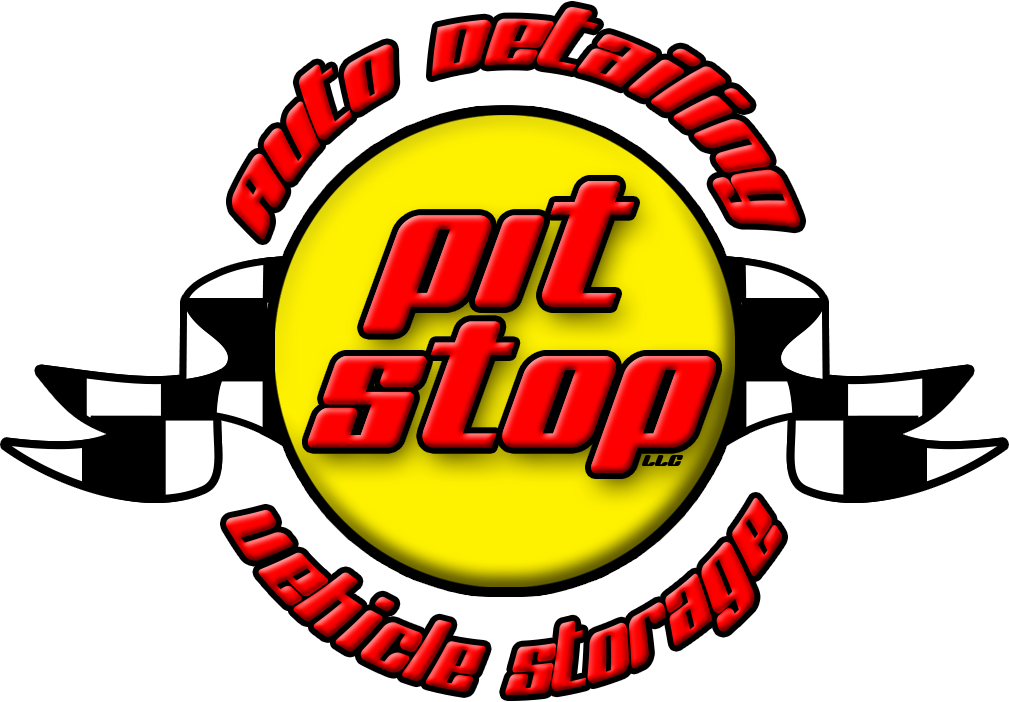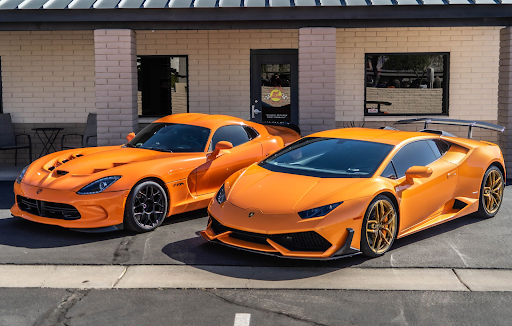Car Paint Fading Scottsdale: Stop UV Damage & Oxidation
GET A FREE ESTIMATEIn Scottsdale, where the sun shines bright and temperatures soar, car paint reaches well over 375° in the summer heat. Picture the vibrant streets lined with luxury vehicles—me gleaming like showroom models, others bearing the telltale signs of Arizona's relentless assault on unprotected paint. This stark contrast reveals a harsh reality: the very sunshine that draws people to the Valley of the Sun becomes your vehicle's worst enemy.
Car paint fading Scottsdale residents experience isn't just surface-level damage. It represents oxidation in overdrive—chemical process accelerated by extreme heat and intense UV radiation that can reduce your vehicle's value and aesthetic appeal within months. This guide provides the knowledge and tools you need to protect your investment against Arizona's unique environmental challenges.

The Arizona Sun: A Relentless Foe to Your Finish
Understanding the Unseen Battle: UV Rays and Heat
UV radiation can decrease paint life expectancy by 50%, making Arizona's climate particularly destructive to automotive finishes. UV rays accelerate the oxidation process in almost all surfaces, breaking down the molecular structure of your paint's protective layers.
The science is straightforward but devastating. UVA rays make up about 95% of UV radiation reaching Earth and penetrate deep into paint layers, breaking down chemicals that hold paint together. Meanwhile, UVB rays affect the top layers of paint, causing color to fade and look less bright.
Heat compounds this damage exponentially. Arizona experiences dramatic temperature swings with scorching sun heating exterior panels, causing expansion, then contraction as temperatures cool at night. This constant cycle stresses already UV-weakened paint, leading to structural failure.
Humidity's Hidden Contribution
Arizona's monsoon season introduces another threat often overlooked in desert climates. When humidity combines with extreme heat, moisture gets trapped in microscopic cracks and crevices. Such accumulation creates perfect conditions for accelerated oxidation and contributes to the cloudy, dull appearance that signals clear coat failure.
Oxidation in Overdrive: The Science of Sun Damage
Clear Coat Failure: The First Line Breached
Your paint's outer clear coat layer is only as thick as a Post-it note. This ultra-thin barrier serves as your vehicle's sunscreen, but it's no match for Arizona's intensity without proper protection.
The sun causes paint to oxidize when it loses its protective clear coat and begins to break down in what we call 'clear-coat failure.' Once this happens, your paint becomes chalky, rough, peeling, bubbly, and dull. The clear coat's degradation exposes underlying layers to direct UV assault, accelerating the damage process.
Fading and Discoloration: Losing the Luster
Intense UV rays break down paint molecules, causing color to fade and appear dull, with fading being more common with red, blue, and black cars. This molecular breakdown occurs because UV rays wreak havoc on chemical bonds, ultimately breaking them down, causing colors to fade in an effect similar to bleaching.
The visual impact extends beyond mere aesthetics. Faded paint signals to potential buyers that a vehicle hasn't been properly maintained, directly impacting resale value. The condition of car paint is among the top 5 factors in resale value.
Cracks, Peeling, and Blisters: Structural Compromise
Scorching heat causes paint to expand and contract, which can lead to cracks, peeling, paint discoloration, fading and inconsistent texturing. Once peeling begins, the underlying layers face direct exposure to UV radiation and environmental contaminants.
Intense heat can cause paint to become brittle and lose flexibility, making it unable to flex with natural body panel movements. This brittleness makes the paint vulnerable to cracking from minor impacts or vibrations that healthy paint would easily withstand.
Water Spotting and Mineral Etching
Water droplets on your car's surface often evaporate quickly in Arizona, leaving behind mineral deposits that create water spots on the paint. These spots etch into the porous surface of sun-damaged paint, becoming increasingly difficult to remove and eventually permanent without professional correction.
Spotting the Signs: Is Your Scottsdale Car's Paint Fading?
Visual Cues: Dullness and Color Shifts
Compare exposed surfaces like your hood, roof, and trunk to areas shielded by emblems or trim pieces. If you notice significant color differences, oxidation has already begun. Oxidation results in a washed-out, brittle substance that has little resemblance to its non-oxidized counterpart.
Look for the telltale chalky, powdery texture that indicates clear coat breakdown. This dusty appearance signals that UV radiation has compromised your paint's protective barrier.
Tactile Test: Roughness and Grittiness
Run your hand across the paint surface. Healthy paint should feel smooth and slick. If you detect roughness, grittiness, or an uneven texture, clear coat degradation has begun. This roughness allows contaminants to penetrate deeper into the paint structure.
Advanced Deterioration: Peeling, Cracks, and Bubbles
Watch for small cracks, blisters, or visible separation of the clear coat. These represent advanced damage that may require professional paint correction. UV damage can happen in as little as a few weeks under the harshest conditions, and while some can be corrected, it's often irreversible.
Your Defense Arsenal: Proactive Paint Protection
Foundational Care: Regular Washing and Quality Products
Wash your vehicle weekly to remove contaminants that amplify UV damage. Road grime, bird droppings and other impurities may ruin paint if not removed in time, as these substances become baked into the paint when they contact solar heat.
Always wash when the paint feels cool to the touch and in shaded areas to prevent water spotting. Use high-quality car wash soap that is pH balanced so it's not too acidic for car paint. Avoid household cleaners that strip protective layers.
Use microfiber towels exclusively to prevent scratches and swirl marks that compromise your paint's smooth surface.
Barrier Protection: Waxes, Sealants, and Coatings
Waxes provide immediate gloss and protection but break down quickly under Arizona's intense conditions. Waxinging benefits only last around 6-8 weeks, so you must wax regularly.
Paint Sealants offer superior durability. We recommend applying wax or paint sealant a minimum of every 3-6 months to keep your car looking shiny and new, but most importantly, for paint health. These polymer-based products chemically bond to your clear coat, lasting several months.
Ceramic Coatings represent the gold standard for long-term protection. Ceramic coating increases paint hardness from 2 or 3H to 9 or 10H hardness, is anti-corrosive, can withstand up to 1200°F, and creates a hydrophobic surface. Professional-grade ceramic coatings chemically bond to your clear coat, filling microscopic pores and creating a hard, protective shell.
Paint Protection Film (PPF) offers ultimate physical protection. The average paint on your vehicle from the factory is 3.5 to 4 mils thick, while PPF averages 6-8 mils, giving almost twice as much protection. Self-healing PPF can repair minor scratches when exposed to heat, making it ideal for Arizona's conditions.
Long-Term Preservation: Sustaining Your Vehicle's Shine
Road Trip Aftercare
Remove acidic bug splatter and road debris immediately after trips. Before you start washing, make sure the paint is cool and parked out of direct sunlight to prevent substances from becoming baked into the surface.
Routine Monitoring and Timely Removal
Get in the habit of washing off dirt and debris so anything your car picked up doesn't get baked into the surface. Regular inspection allows you to address contamination before it causes permanent damage.
Hand-dry with microfiber cloths to remove all mineral deposits that could etch into sun-damaged paint.
When to Seek Professional Help
When DIY methods prove insufficient, or when you notice advanced deterioration like peeling or extensive fading, professional intervention becomes necessary. Paint correction, professional ceramic coating application, or PPF installation requires specialized knowledge and equipment for optimal results.
Conclusion
Scottsdale's stunning sunshine comes with a hidden cost—accelerated car paint fading and oxidation that can devastate your vehicle's appearance and value. However, understanding the science behind UV damage and implementing proactive protection strategies transforms this challenge into a manageable aspect of vehicle ownership.
The investment in quality products, regular maintenance, and professional-grade protection pays dividends in preserved aesthetics and maintained resale value. Whether through consistent washing, strategic product application, or advanced coating systems, you can maintain your vehicle's showroom appearance despite Arizona's harsh conditions.
For ultimate protection against Arizona's relentless sun, consider professional paint protection film installation from Pit Stop Auto Detailing & Vehicle Storage. With over 16 years of experience serving Scottsdale and certified expertise in self-healing PPF technology, we provide the comprehensive protection your vehicle deserves. Our flexible urethane films not only possess self-healing properties that keep your clear coat clear but also offer sleek, high-profile gloss that remains consistently unparalleled.
Don't let the desert sun win this battle. Take control of your car's paint health today and
schedule your consultation to protect your investment for years to come.
Share with your friends




